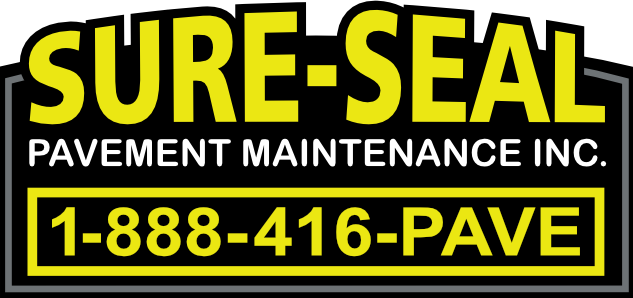 Distortion in asphalt pavement occurs when there is a severe weakness in the subgrade of your asphalt pavement that causes the asphalt to shift before it has properly set. The movement usually takes place after construction has ended. It’s often the result of shoddy workmanship combined with the harsh effects of natural elements and the physical pressures of being in a high-traffic area. There are different types of pavement distortion and they’re all symptoms of a much deeper and sometimes costly underlying problem in your asphalt pavement. All signs of asphalt pavement distress need immediate attention because they pose serious safety hazards for motorists and pedestrians on your property.
Distortion in asphalt pavement occurs when there is a severe weakness in the subgrade of your asphalt pavement that causes the asphalt to shift before it has properly set. The movement usually takes place after construction has ended. It’s often the result of shoddy workmanship combined with the harsh effects of natural elements and the physical pressures of being in a high-traffic area. There are different types of pavement distortion and they’re all symptoms of a much deeper and sometimes costly underlying problem in your asphalt pavement. All signs of asphalt pavement distress need immediate attention because they pose serious safety hazards for motorists and pedestrians on your property.
5 Common Types of Distortion in Asphalt Pavement
Different types of pavement failure include: rutting, corrugation and shoving, depressions, upheaval/swelling, and patch failures.
Rutting
Rutting is when the pavement becomes uneven and creates either a shallow or deep conduit in the asphalt. Ruts retain water, which further erodes your asphalt over time. It’s usually worse in high-traffic areas with an overabundance of inclement weather patterns. The width of the rut is a good indication of whether it’s a surface or underground problem. Narrow ruts mean it’s a surface failure and can easily be repaired with pavement treatments. Wide ruts indicate the problem lies deeper below the surface and the asphalt might need to be shimmed. For more serious damages, complete reconstruction and overhaul may be necessary.
Corrugation and Shoving
Corrugation and shoving are very similar; the former is a formation of ripples in the asphalt that resembles ripples on a washboard while the latter has a wavier appearance. They’re usually caused by a combination of poor subgrade amalgamation, layering, and heavy traffic. Minor damages can be treated with an easy patch job while severe disrepairs need a manual overlay.
Depressions
Depressions are small, sunken-in localized parts of the asphalt that create an uneven ground to walk and drive on. They’re usually indicative of an unstable subgrade and need to be dug up to remove the affected subgrade and replace it with a higher quality and more durable aggregate that can better withstand severe weather conditions and other external elements.
Upheaval/Swelling
Upheaval or swelling happens when a localized part of the asphalt bubbles up as a result of external forces like frost or extreme moisture causing the aggregate to expand and oxidize. The only repair method is to completely remove the affected area and refill it with a superior asphalt mixture.
Patch Failures
Patch failures are a result of a number of factors:
- The new filling doesn’t completely match the surrounding pavement
- Poor compaction during construction
- Use of low-quality materials
- Location in heavy-traffic areas
- Overexposure to poor weather conditions
The only solution here is to remove the affected part of the asphalt and re-patch it altogether. Throughout the lifespan of any plot of pavement, patching is inevitable. The best way to ensure that each patch job is done correctly and in a timely manner the first time is to hire a reliable and professional asphalt paving company from the beginning.
Asphalt Paving Contractors in Ontario
Sure-Seal Pavement Maintenance Inc. has over 20 years of experience in asphalt paving and repairs. We offer industry-leading seven-year structural warranty and we stand behind the quality and durability of our services, ensuring that our work will last for years to come. For a free consultation, please call our number, 416-410-3705 or if you’re in Toronto, call 416-410-3705.

